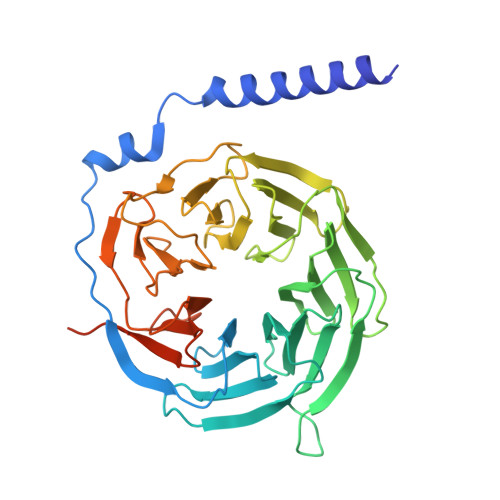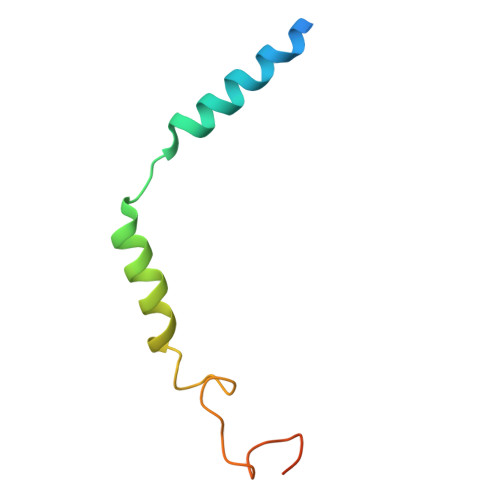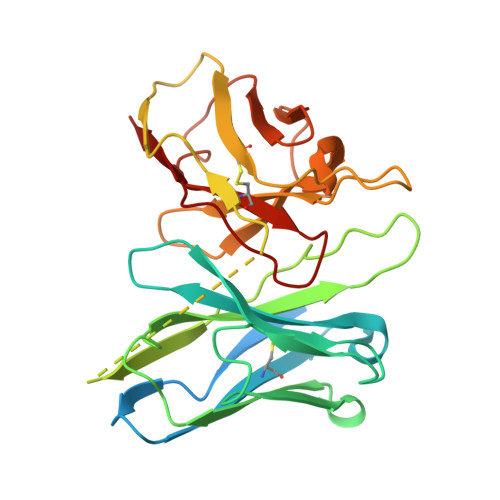Structural basis for the constitutive activity of the melanocortin receptor family.
Feng, W., Zhou, Q., Zheng, C., Yang, D., Wang, M.W.(2025) Structure 33: 1074-1087.e5
- PubMed: 40157361
- DOI: https://doi.org/10.1016/j.str.2025.03.004
- Primary Citation of Related Structures:
9K3F, 9K3H, 9K3K, 9K3L, 9K3P - PubMed Abstract:
The constitutive activity of melanocortin receptors (MCRs) is integral to several physiological processes. The unliganded cryo-electron microscopy structures of MC1R, MC2R, MC3R, MC4R, and MC5R in complex with G s proteins determined at global resolutions of 2.98 Å, 3.01 Å, 2.75 Å, 3.12 Å, and 2.86 Å, respectively, revealed that their binding poses and interactions with G s are similar to those of agonist-bound MCRs. The extracellular regions of the transmembrane helices (TMs) exhibit distinct conformational rearrangements, characterized by varying shifts of TM3 and outward displacements of TM4. These variations represent unique structural features of constitutively activated MCRs. Unassigned electron densities were observed within the orthosteric pockets where extensive interactions with cognate ligands occur. In addition, zinc ions, but not calcium, positively regulated MC4R activity in a dose-dependent manner. Our findings provide valuable insights into the molecular mechanisms underlying MCR basal activity and highlight the role of divalent ions in receptor activation.
- Research Center for Medicinal Structural Biology, National Research Center for Translational Medicine at Shanghai, State Key Laboratory of Medical Genomics, Ruijin Hospital, Shanghai Jiao Tong University School of Medicine, Shanghai 200025, China.
Organizational Affiliation:




















